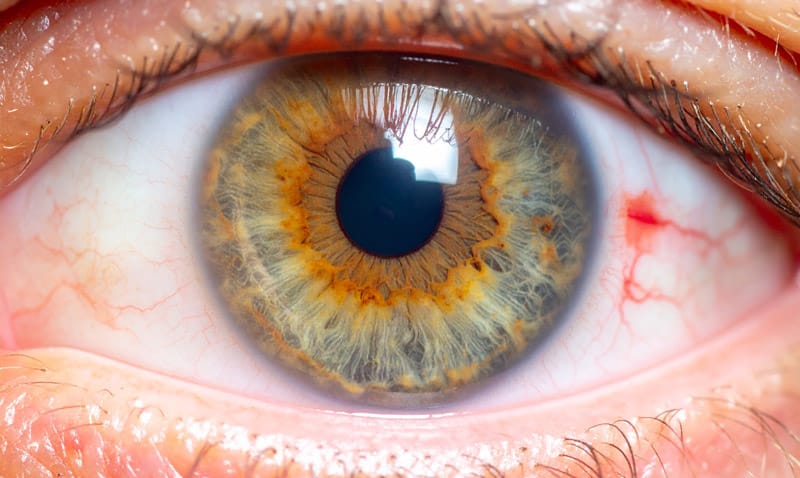
Glaucoma affects between 2 and 3 million Americans and is the second leading cause of blindness, just behind cataracts. It’s suspected that over 3 million people suffer from glaucoma, with many cases still undiagnosed. This post explores Glaucoma Causes, Types, and Treatments to help you understand what triggers the disease, how it manifests, and available treatment options.
Glaucoma is a group of complex diseases, most of which are caused by increased liquid production. If the eye’s trabecular meshwork becomes blocked or constricted, fluid backup occurs in the eye that, over time, injures the optic nerve. The liquid buildup creates too much pressure within the eye.
Glaucoma is classified into three primary types: primary open-angle glaucoma, angle-closure glaucoma, and normal-tension glaucoma. This post focuses on the two most common forms—primary open-angle and angle-closure glaucoma—in our discussion on Glaucoma Causes, Types, and Treatments.
The third, normal-tension glaucoma, is when the optic nerve is damaged without extra pressure. Those at highest risk of this much rarer condition are those with a family history of irregular heart rhythm and those of Japanese ancestry. Migraines, Raynaud’s disease, and sleep apnea are other risk factors to look out for.
What is Primary Open-Angle Glaucoma?
This is the most common form of glaucoma, which occurs when the eye’s drainage canals develop clogs over time. It is the most difficult to diagnose because it grows slowly, and there are rarely any early warning signs.
According to the Glaucoma Research Foundation, open-angle glaucoma can be distinguished by the following symptoms:
- Slow clogging of the drainage canals, resulting in increased eye pressure
- Loss of peripheral vision
- In advanced stages, tunnel vision
Regular visits to your eye doctor can prevent long-term damage, and if detected early enough, the disease typically responds well to treatment.
What is Angle-Closure Glaucoma?
A less common form, but still the second most common, is angle-closure glaucoma – sometimes called narrow-angle or acute glaucoma. With this type of glaucoma, eye pressure typically rises very quickly, and the iris is not as wide and open as it should be.
Except for an acute angle, narrow angles can go undetected just like open angles. If the pupil increases in size too much or too quickly, it can cause the rim of the iris to gather over the drainage canals, resulting in a radical increase in eye pressure.
Acute angle-closure glaucoma develops very quickly, with very noticeable symptoms and damage. This type demands immediate attention to prevent irreversible damage to vision.
Symptoms of Acute Angle-Closure Glaucoma can include:
- Nausea and vomiting
- Eye pain
- Abrupt onset of visual disturbance
- Distorted or hazy vision
- Halos or rainbows around light
- Reddening of the eye
Who is At-Risk for Glaucoma?
Glaucoma can affect everyone, although hereditary glaucoma is the most common form, certain groups are at higher risk. Studies reveal that African Americans over 40 and individuals over 60, especially Hispanics, are more vulnerable. Understanding Glaucoma Causes, Types, and Treatments is essential, and high-risk individuals should schedule regular eye exams at least every two years to catch early signs and protect their vision.
Glaucoma Treatment
Unfortunately, there is no cure for glaucoma, and any damage caused is permanent, but the disease is manageable, and most people retain their eyesight. Depending on the type of glaucoma, there are several treatment options, which include everything from eye drops to surgical procedures.
Open-Angle Glaucoma Treatment Options
For those with primary open-angle glaucoma, the following treatment options are available:
1. Prescription Eye Drops
Depending on the severity of the glaucoma, eye drops are typically the first step in treatment.
2. Oral Medications
Oral medications are used when eye drops alone are not effective. These are given to our patients to reduce overall pressure on the eye. According to the American Academy of Ophthalmology, possible side effects of the medication include stinging or itching, dry mouth, red eyes, and altered energy level. Medicine must be taken as prescribed to avoid any vision-threatening damage.
-
Carbonic anhydrase inhibitors (e.g., acetazolamide) — short-term use due to side effects
3. Laser Treatments
Minimally invasive procedures to improve drainage.
-
Selective Laser Trabeculoplasty (SLT) – This procedure uses a newer, low-energy laser to treat targeted cells in the drainage angle. Standard postoperative treatment includes close observation, eye drops, or an oral non-steroidal anti-inflammatory drug. Combining SLT with regular glaucoma medications usually produces better results, though again, at different dosage levels than before.
- Direct Selective Laser Trabeculoplasty (DSLT): This newer, non-contact laser therapy delivers energy through the sclera (the white part of the eye) without needing a gonioscopy lens. DSLT is quick, painless, and does not require anesthesia. It is gaining attention as a convenient alternative to traditional SLT.
4. Minimally Invasive Glaucoma Surgery (MIGS)
A newer class of surgical options that are less invasive and have quicker recovery.
-
iStent, Hydrus Microstent, Xen Gel Stent – often combined with cataract surgery
-
Trabectome, OMNI, Kahook Dual Blade (KDB) – devices or tools that remove or bypass the trabecular meshwork
5. Traditional Glaucoma Surgery
When medications are unsuccessful or have intolerably adverse side effects, surgery is often the best option. Two standard surgical options for primary open-angle glaucoma are argon laser trabeculoplasty and selective laser trabeculoplasty. Incisional surgery is also a secondary option if the laser surgery doesn’t quite complete the job.
-
Trabeculectomy – creates a new drainage channel
-
Glaucoma drainage implants (tubes) – e.g., Ahmed or Baerveldt devices

Angle-Closure Glaucoma Treatment Options
People suffering from angle-closure glaucoma typically have laser or conventional surgery. It’s not uncommon for doctors to perform surgery on both eyes as a safety measure. These surgeries are successful and normally long-lasting afterward. The main surgical option for angle-closure glaucoma is laser iridotomy.
1. Laser Iridotomy
The primary surgical treatment is laser iridotomy, which involves creating a tiny hole about the size of a pinhead in the iris. This hole improves fluid flow to the drainage angle, helping to reduce intraocular pressure. Laser iridotomy is often recommended as a preventative measure for patients with narrow angles, frequently before starting any glaucoma medications. This procedure is quick and usually well-tolerated, with a recovery time of about one hour.
2. Medications
While laser iridotomy is the main surgical option, glaucoma medications are often effective in managing eye pressure, either before or alongside surgery.
3. Incisional Surgery
In more severe or complicated cases, incisional surgery may be necessary. This surgery takes longer, including recovery time, which can be between 4 and 8 hours. Depending on the patient’s condition, two types of incisional surgeries might be performed.
A trabeculotomy involves making incisions to open the drainage pathways without removing any eye tissue. This helps clear the eye’s fluid drainage and improve pressure control.
A trabeculectomy is a more involved procedure that requires partial removal of the eye’s drainage system to allow fluid to escape more easily. For severe glaucoma, the doctor may also implant a valve device to assist fluid drainage.
Glaucoma, Compound Conditions and Treatments
Many of the same risk factors for glaucoma also make someone more likely to develop cataracts. Patients who develop both diseases simultaneously represent a challenge for doctors, as treating one condition may worsen the other. Doctors must thus consider all of their glaucoma and cataract treatment options, choose the right ones, and perform them correctly to safeguard the patient’s vision.
If a patient’s glaucoma is mild and appears stable, the doctor may first perform cataract surgery. Not only will this get the cataracts out of the way for future glaucoma treatments, but because cataracts put pressure on the drainage angle, it may partially relieve the glaucoma on its own. Likewise, if the cataracts are mild, doctors may begin by treating the glaucoma and perform cataract surgery later on. If both the cataracts and the glaucoma are serious, doctors may use a combination surgery to resolve them both at once.
Importance of Regular Checkups
Ongoing monitoring is crucial because glaucoma can progress or new types of glaucoma can develop even after surgery. Routine exams at Barnet Dulaney Perkins Eye Center help catch early signs and allow timely intervention, helping you maintain healthy vision for years.

